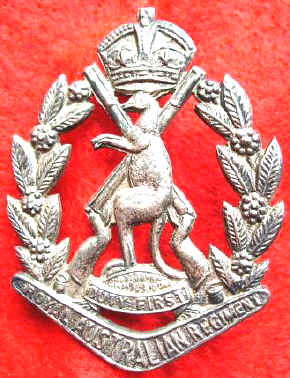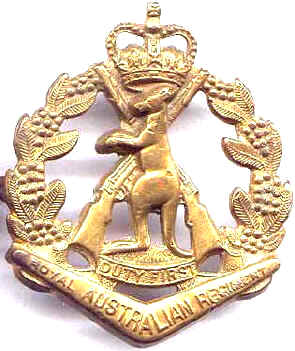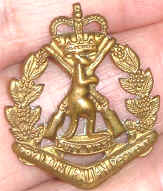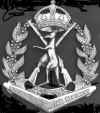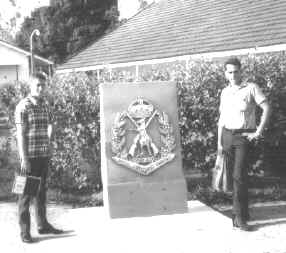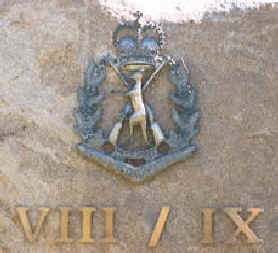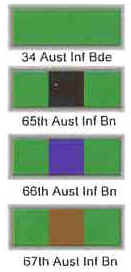 |
|
|
|
|
The Royal Australian Regiment (RAR) |
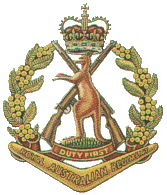 |
Australia has put many
fine units into the field, "in harms way"; none were any
better than the men who wear 'Skippy', the men of the Royal Australian
Regiment.
Choose the Battalion that interests you from the list below and Click the link . . . OR read the History of the Regiment |
|
The Regiment belongs to the |
Sub category index |
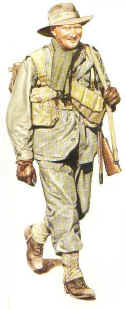 circa
1951 circa
1951
|
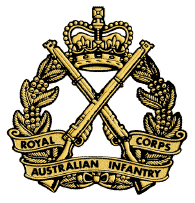
|
||
|
The Royal Australian Infantry Corps |
||
|
|
||
|
|
||
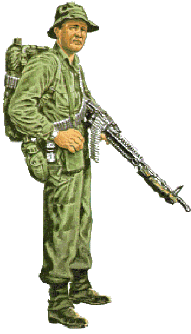
circa 1968
|
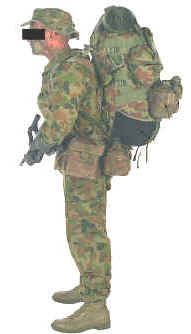
circa 2000 |
|
REGIMENTAL PRAYER OF THE ROYAL AUSTRALIAN REGIMENT
|
| In 1998 the Regiment
celebrated it's 50th birthday. A special Tattoo was written for the
occasion. |
| PUC; Kapyong | PUC; Long Tan | MUC; Service with US 173rd Airborne | Vietnamese Cross of Gallantry Unit Citation |
| The formation of The Royal Australian Regiment in the years soon after the end of the Second World War was of fundamental importance to the Australian Army. Before that time Australia's
peacetime army had been substantially a part-time militia, which formed the basis for a voluntary, specially enlisted force for war. The regular component was merely the permanent cadre for the larger citizen army. After 1948, however, for the first time Australia had a permanent, professional army, available in peace and war for any task the government might direct. But although The Royal Australian Regiment was the key component of the new Australian Regular Army, it was not a complete break with the past; it was built on the existing reservoir of soldiers who had seen active service in the Second World War. The Regiment might have been new, but the traditions developed in the Boer War and in two world wars continued.
The continuity of service was preserved because The Royal Australian Regiment had its genesis in three infantry battalions of the
On cessation of hostilities in 1945 the Australian Government made a commitment to contribute Australians to the Commonwealth Occupational Forces in Japan. The 34th Infantry Brigade was raised in Morotai, specifically for this purpose, and consisted of three Infantry Battalions, namely the 65th 66th and 67th Battalions. On 23 November 1948 the 34th Infantry Brigade was designated as the Australian Regiment, with the Battalions becoming the 1st, 2nd and 3rd Battalions, The Australian Regiment. On 10 March 1949 Royal assent was given and the Regiment became the Royal Australian Regiment.
The Regiment was deployed to Korea in 1950 at the outbreak of hostilities between North and South Korea, at the request of the United Nations and served there until 1956. For most of the next two decades the Regiment remained committed on active service operations in Malaya, Malaysia, Borneo and South Vietnam. In recent times the Regiment has provided elements for United Nations peace keeping operations such as Cambodia and Somalia. During service in Australia the Regiment has made a significant contribution to national disaster operations such as cyclones Althea and Tracey.
|
|
The
Regimental Ode |
|
|
TOURS FOR BATTALIONS OF THE ROYAL AUSTRALIAN REGIMENT DURING THE VIETNAM WAR |
|
| Battalion Birthdays | Royal Australian Regiment | 23 November |
| 1 RAR | 12 October | |
| 2 RAR | 16 October | |
| 3 RAR | 20 October | |
| 4 RAR | 1 February | |
| 5 RAR | 1 March | |
| 6 RAR | 6 June (6th of the 6th) | |
| 7 RAR | 1 September | |
| 8 RAR | 8 August (8th of the 8th) | |
| 9 RAR | 13 November | |
| 2/4 RAR | 15 August | |
| 5/7 RAR | 3 December | |
| 8/9 RAR | 31 October |
|
QUEEN'S and REGIMENTAL COLOURS PRESENTED to the BATTALIONS of the RAR |
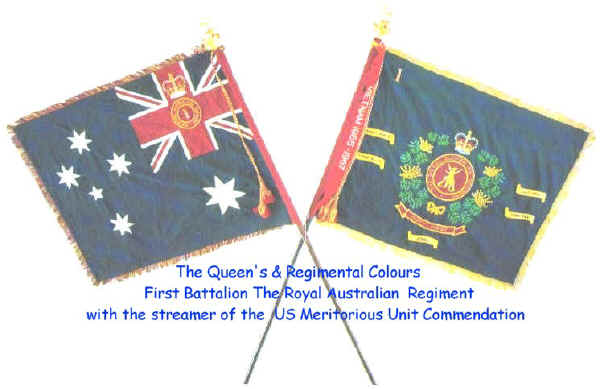
|
| Unit | Date | Place | By Whom |
| 1
RAR |
30 March 1957 | Brisbane | The Governor-General, Field Marshal Sir William Slim, GCB, GCMG, GCVO, GBE, DSO, MC, KstJ |
| 1 RAR | 5 July 1976 | Townsville | The Governor-General, The Honourable Sir John Kerr, AK, GCMG, KstJ, QC |
| 1
RAR |
12 May 1988 | Townsville | The Governor-General, Sir Ninian Stephen, AK, GCMG, GCVO, KBE, KStJ |
| 2 RAR | 2 September 1955 | Brisbane | The Governor-General, Field Marshal Sir William Slim, GCB, GCMG, GCVO, GBE, DSO, MC, KstJ |
| 2 RAR | 17 September 1976 | Townsville | The Governor-General, The Honourable Sir John Kerr, AK, GCMG, KstJ, QC |
| 3 RAR | 24 April 1956 | Sydney | The Governor-General, Field Marshal Sir William Slim, GCB, GCMG, GCVO, GBE, DSO, MC, KstJ |
| 3 RAR | 24 April 1985 | Sydney | The Governor-General, Sir Ninian Stephen, AK, GCMG, GCVO, KBE, KStJ |
| 4
RAR |
11 April 1965 | Adelaide | The Governor-General, The Right Honourable Viscount De Lisle, VC, GCMG, GCVO |
| 4 RAR | 11 October 1984 | Townsville | The Governor-General, Sir Ninian Stephen, AK, GCMG, GCVO, KBE, KStJ |
| 5 RAR | 29 October 1967 | Holsworthy | The Governor-General, Sir Roden Cutler, VC, KCMG, CBE |
| 6
RAR |
10 May 1968 | Townsville | The Governor-General, The Right Honourable Lord Casey, GCMG, CH, DSO, MC |
| 7 RAR | 6 October 1968 | Holsworthy | The Governor of NSW, Sir Roden Cutler, VC, KCMG, CBE |
| 8
RAR |
25 September 1968 | Terendak, Malaysia |
The Colonel Commandant, Lieutenant General Sir Reginald Pollard, KBE, CB, DSO |
| 8 RAR | 1 October 1989 | Enoggera | The Governor-General, The Honourable Bill Hayden, AC |
| 9 RAR | 29 April 1971 | Enoggera | The Governor-General, The Right Honourable Sir Paul Hasluck, GCMG, GCVO |
| 9 RAR | 1 October 1989 | Enoggera | The Governor-General, The Honourable Bill Hayden, AC |
| The Tattoo and the other Regimental marches on this site in sample size come from the CD that contains them all in full and is available from the RAR Foundation. Note that the quality of the samples is well below that of the CD because I have compressed them to make them fast loading. They are .wav files in mono at 11megahertz so quality is affected. They are demonstration samples only. The RAR Foundation is the Copyright owner. |

